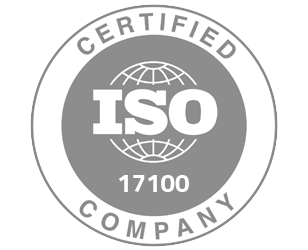
Must-Know Tips for Translating Gujarati to English
The Gujarati language, with its beautiful script and rich history, connects millions of people across the globe. But what happens when you need to share that language with an English-speaking audience? That's where translation comes in. This blog post will equip you with practical tips and insights to navigate the challenges of Gujarati to English translation, helping you ensure your message is understood correctly.
What makes Gujarati different from English?
-
Language Structure: The first difference between the two languages can be seen in the structure of their grammar and syntax. While English relies heavily on word order to determine what to mean, Gujarati uses more suffixes and prefixes to form words. This means that when speaking or writing in Gujarat, it is less important where certain words are placed as long as they are connected with the right prefix or suffix. Gujarati also uses postpositions instead of prepositions as English does. These postpositions follow the noun rather than preceding it, making it easier to understand how sentences connect.
-
Vocabulary: Another big difference between these two languages is the vocabulary they use. While English borrows words from other cultures, such as Greek and Latin, most of its vocabulary comes from Germanic roots. On the other hand, Gujarati's vocabulary comes primarily from Sanskrit; however, it also incorporates words from Arabic, Portuguese, Marathi, Persian, Hindi, and Urdu.
- Pronunciation: Gujarati has retroflex sounds like ટ, ઠ, ડ, ઢ, ણ, which require the tongue to be curled back, a feature not found in English. Additionally, Gujarati is syllable-timed, meaning each syllable is given roughly equal time, whereas English is stress-timed, with some syllables pronounced more strongly than others.
- Cultural Expressions & Idioms: Cultural expressions and idioms further set the languages apart. Many Gujarati idioms do not translate directly into English, and vice versa. For example, the phrase "દૂધનું દુધ અને પાણીનું પાણી થવું" (Doodh nu doodh ane paani nu paani thavu) literally means "Milk as milk and water as water should be separated," which corresponds to the English phrase "Justice should be served."
-
Writing System: Finally, there is a stark contrast between the way these two languages are written down on paper. Unlike English which uses a Roman alphabet with 26 letters (plus additional characters), Gujarati uses a 45-character alphabet called Modi Script which was developed during medieval times as a way to write down documents related to commerce and trade transactions.
Tips for Accurate Gujarati-to-English Translation
1. Assess the Complexity of the Text
Not all documents require the same level of expertise. Identifying the complexity of the content helps determine whether AI, human translators, or a hybrid approach is best.
- Simple Texts (e.g., informal emails, personal messages, social media content) – AI translation tools like Google Translate or DeepL can provide a basic understanding, though they may lack nuance.
- Moderately Complex Documents (e.g., business emails, product descriptions, blog posts) – A combination of AI for speed and human editing for accuracy ensures better readability.
- Highly Specialized Texts (e.g., legal contracts, medical records, technical manuals, literary works) – A professional translation agency is necessary to ensure accuracy, compliance, and context preservation.
2. Identify the Purpose of the Translation
The intended use of the translation dictates the level of precision required.
- For Internal or Informal Use – AI translation can be useful for quick, general understanding but should not be relied on for formal purposes.
- For Official, Legal, or Academic Use – Certified translations are often required. An AI-generated translation will not meet the legal or quality standards needed for official documents.
- For Business or Marketing – Professional translation ensures brand consistency and cultural appropriateness, avoiding embarrassing translation errors.
3. Ensure Consistency in Terminology
For industries such as law, medicine, and business, terminology consistency is critical. AI translation tools can use translation memories and glossaries to maintain consistency. However, human translators are needed to refine and verify technical terms to avoid errors.
4. Idioms and Cultural Expressions Should Be Localized, Not Translated Literally
Many Gujarati idioms do not have direct English equivalents and need to be interpreted by a human rather than translated word-for-word to maintain their meaning.
- Gujarati: "ઊંટ પર્વત નીચે ગયો" (Unt parvat niche gayo)
- Literal Translation: "The camel went under the mountain."
- Intended Meaning: Someone who is overconfident or arrogant has been humbled.
- Correct English Equivalent: "Brought down to earth" or "Pride comes before a fall."
PoliLingua’s Flexible Solutions for Gujarati-to-English Translation
At PoliLingua, we offer a range of translation solutions tailored to your needs—whether you require AI-powered translation, Machine Translation Post-Editing (MTPE), or fully human translation. Our advanced AI translation tools provide a fast and cost-effective solution for simple or large-scale projects, while our MTPE services ensure that AI-generated content is refined for accuracy, consistency, and natural readability. For specialized, official, or highly nuanced content, our expert human translators guarantee precision, cultural relevance, and industry-specific expertise.
Not sure which option is right for you? Talk to one of our project managers today and get a free quote! We’ll help you find the best solution that meets your budget, timeline, and quality requirements.







